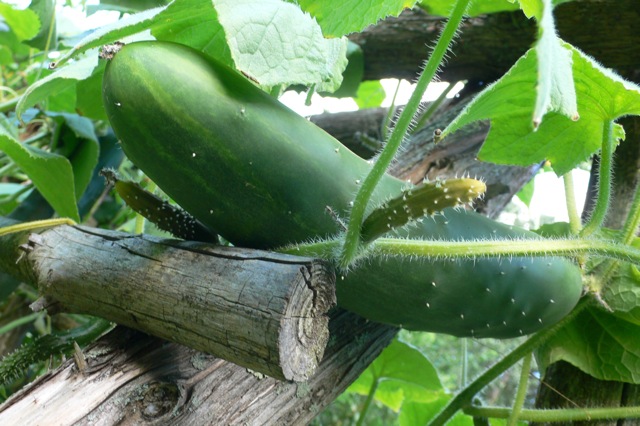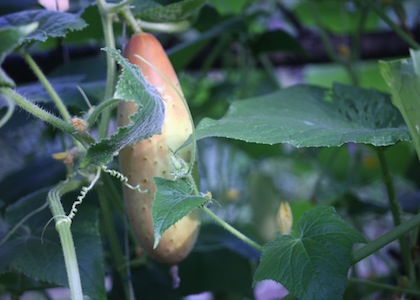
How To Grow Cucumbers
By Pamela Page
Cucumbers are one of my favorite crops. They come in a variety of textures, tastes and colors, and they’re 90% water; hence, not fattening. Contrary to popular belief, cucumbers are a fruit, related to muskmelons, and not a vegetable.
When I think of cucumbers, I think not only of English people eating thin, sometimes soggy, triangular little sandwiches, but also of ancient Roman midwives carrying cucumbers to the birthing mother and throwing them away when the child was born. Will someone please tell me what this was all about?
There are three kinds of cucumbers: pickling, burpless (aka seedless) and slicing. I’m not a big pickle eater, and I never burp, so I grow slicing cucumbers. They take longer to mature than the others, but are well worth the wait.
My favorite cucumber is the beautiful “Phoona Keera.”
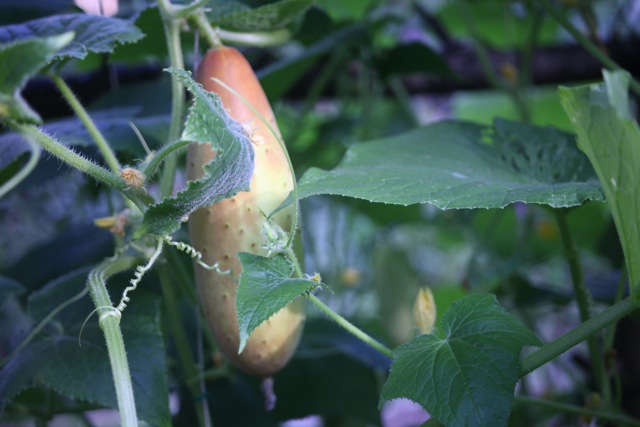
Then there are Japanese cucumbers.
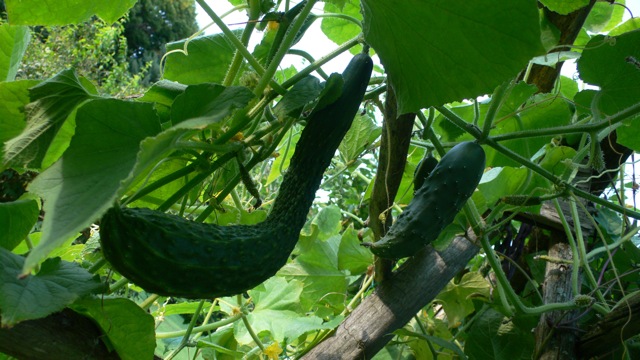
And miniature white cucumbers.
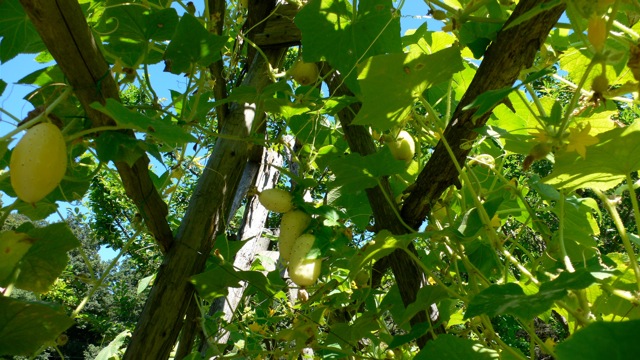
And the amazing “Dragon’s Egg” cucumber.
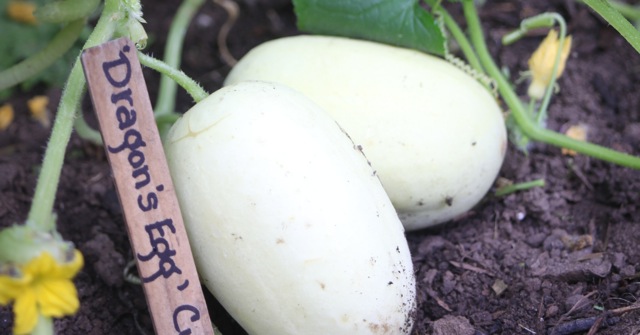
There’s even a rare cucumber that looks like an apple, “Richmond Green Apple.”
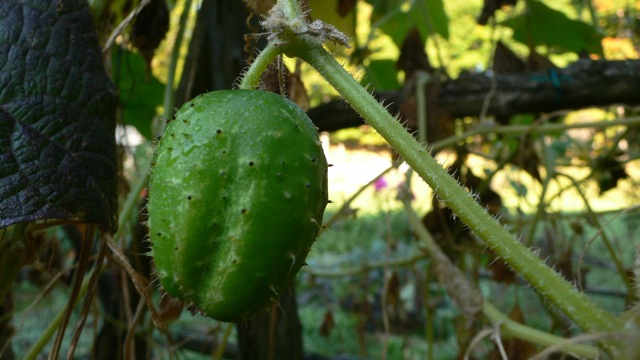
Since I have a fair amount of space in my garden, I grow vining cucumbers because they produce more fruit than bush varieties. Vining cucumbers, however, require support.
If you don’t have time to tie things up or a lot of space, bush varieties are a better option.
Sow cucumber seeds directly into the ground about four weeks after the last frost date. Plant two plants for every person you’d like to feed cucumbers to.
Plant the seeds ¾ to 1 inches deep and 2 to 8 inches apart in rows 4-6 feet apart. When the seedlings are about 5 inches tall, pinch out the weaker plants until you have 12 inches between each plant. If you plan to train your cucumber vines to a structure, the plants can be closer together. For trellised cukes, thin the plants to 6 inches apart.
Cucumber plants need to be watered frequently, especially when they are making cucumbers. But be careful not to overwater. Do not water the leaves late in the day, since wet leaves lead to disease. And make sure to plant your seeds in soil that drains well. Mulch helps keep the plants moist. A five-inch layer of straw works well.
While they’re growing, feed your cucumbers liquid fish emulsion, available at most nurseries. The instructions are easy. After they flower, you should apply a liquid kelp spray.
Most cucumbers are ready to harvest in 50 to 70 days. It’s a good idea to check your cucumbers daily because the plant will stop producing if the fruit stays on the vine too long.
Once production drops off, it’s time to toss the vine.
The most common problem with cucumbers is downy mildew and powdery mildew – a whitish covering on your plants leaves. At the first sight of powdery mildew, I make a solution of one part skim milk to nine parts water and spray my plants. Luckily, mildew usually doesn’t appear until late in the growing season when production has already stopped. If it happens at this point, I just send the plants to the compost pile.
Fun fact: Cucumbers have two different flowers, male and female.
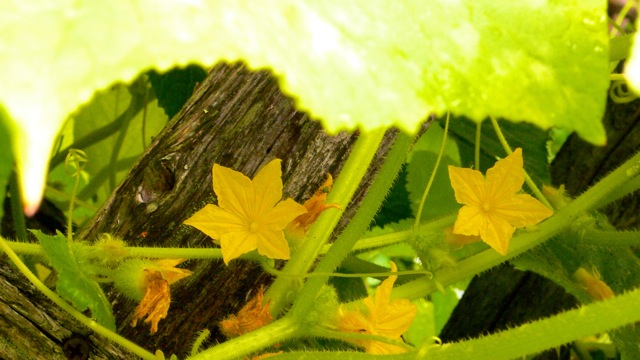
The male flowers open first and drop off. The female flowers make cucumbers and shouldn’t drop off, but if they do, touch the inside of each male and female flower with a cotton swab. This pollinates the flowers and helps them develop into fruit. Et voila! You are not just a humble gardener. You are a fertility doctor as well!
